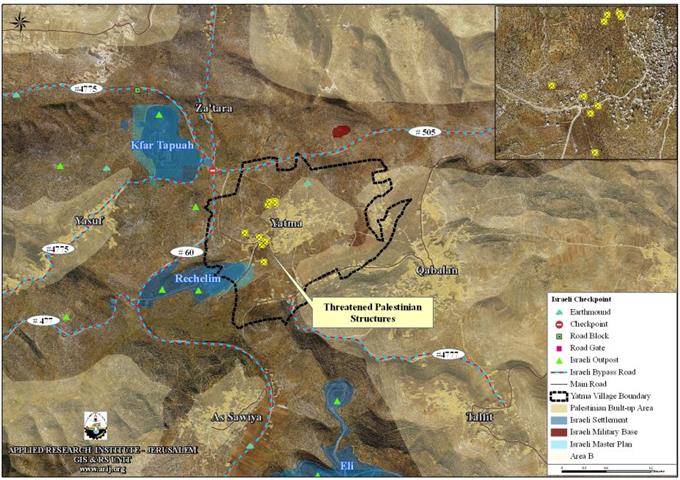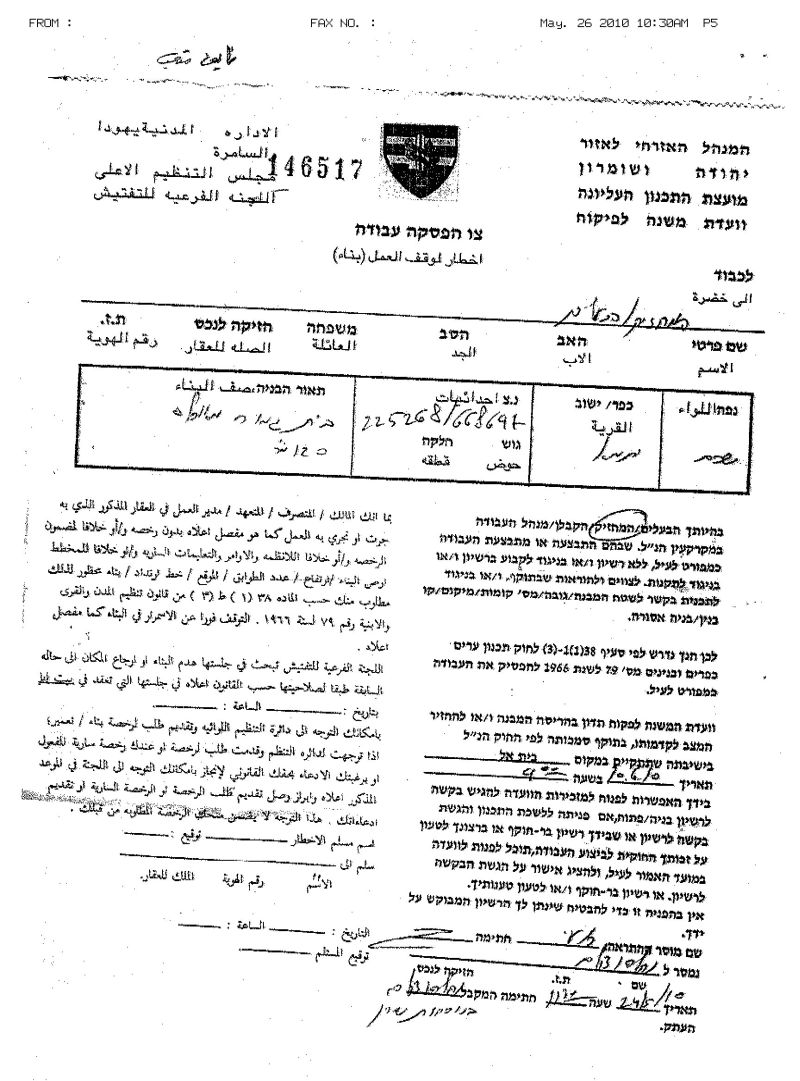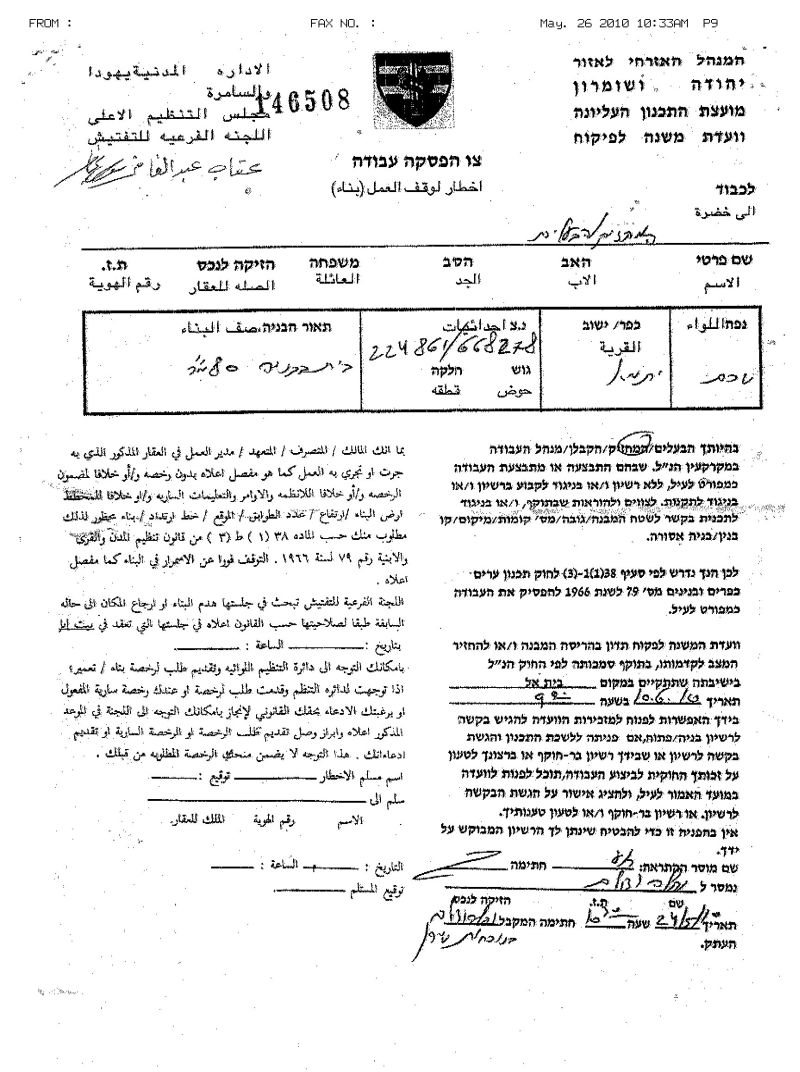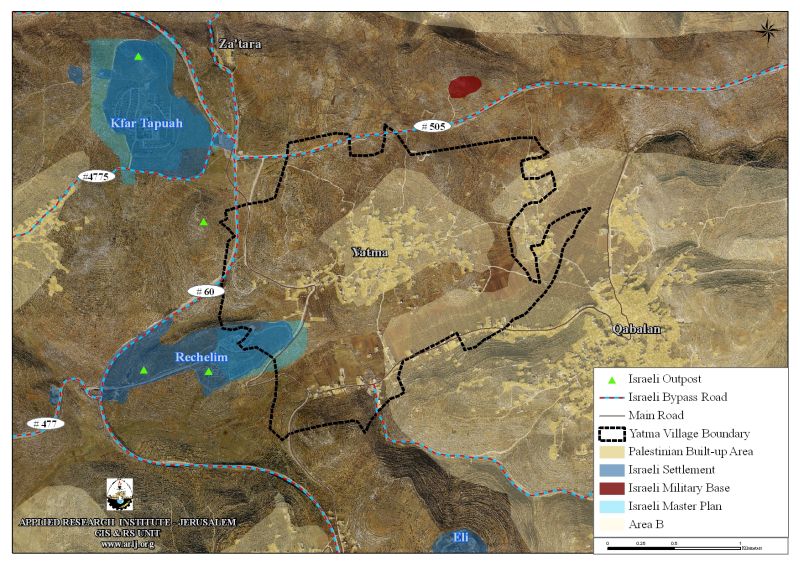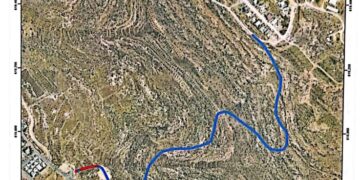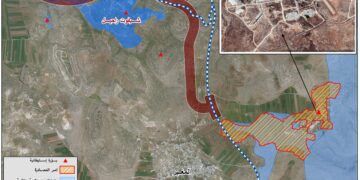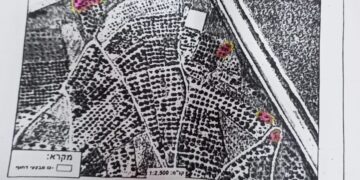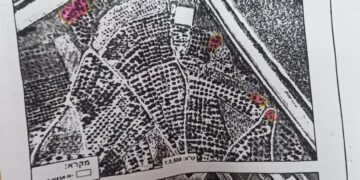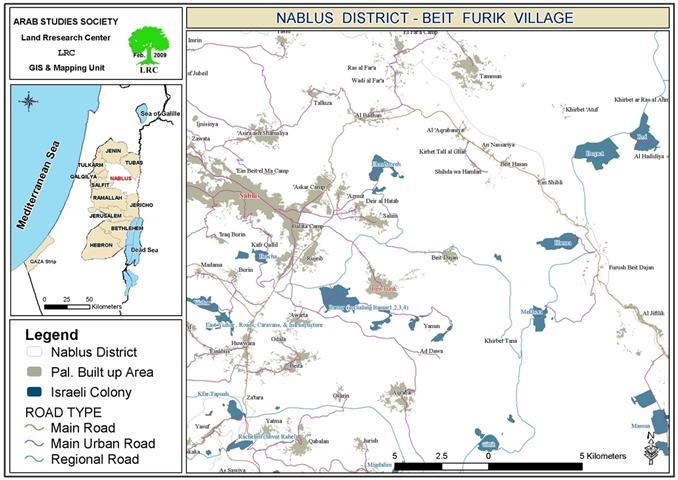On May 24, 2010, the Israeli Civil administration (ICA) delivered nine halt of construction orders to Palestinian home-owners in Yetma village south of Nablus City. Recipients of the halt of construction orders are:
1. Bahjat Abdul Rahman An-Najjar: a 180 square meters house.
2. Daoud Ahmad Snowbar,
3. Muhammad Mahmud Najjar: a 220 square meters house.
4. Zidan Mut’eb Snowbar: a 150 square meters house.
5. Iqab Abdul Ghani Najjar: an 80 square meters house.
6. Ayoub Kayed Najjar: a 100 square meters house.
7. Nayef Mut’eb Snowbar: a 120 square meters house.
8. Muneer Nayef Snowbar: a 100 square meters house.
9. Muhammad Bassam Najjar: a 150 square meters house. See Map 1
Map 1: Location of the threatened Palestinian Houses in Yetma Village
Photo 1: the order of Nayef Met’eb House
Photo 2: The house of Iqab Abdel Ghani Najjar
The ICA gave residents until the 10th of June 2010, to file objections against the halt of construction orders. It is worth noting out that during the month of August 2009, the Israeli Civil administration delivered another halt of construction orders to nine Palestinian families in the village allegedly for unlicensed building in areas classified as C which are fully controlled by the Israelis according to Oslo II Interim agreement of 1995. Recipients of the demolition orders were:
1. Wael Abdel Aziz Najjar,
2. Musa Wajeeh Nassar
3. Nabhan Tawfeeq Najjar
4. Tamer Muhammad Hilal Najjar
5. Fadi Abdel Raheem Snowber
6. Yaser Ahmad Snowber
7. Muhammad Mahmoud Snowber
8. Iyad Muhammad Snowber and
9. Abdel Rahem Muhammad Snowber. See Map 2
Map 2: Threatened Palestinian Houses in Yetma village – August 2009
For more details, click the following link
Yetma Village: Location and Population:-
The village of Yetma is located some 12 kilometers to the south of Nablus city. It is bordered by Qabalan village from the east, As Sawiya village and Rechalim settlement from the south. Yasuf and Iskaka villages form the west and Kfar Tapuh settlement and Za’tara village from the north. The urban area of the village stands on 356 dunums of land, about 9.1% of the village’s total land area (3895 dunums) and is a home to 3328 inhabitants (PCBS 2007).
The Geopolitical Status in Yetma Village
In the Oslo II Interim Agreement that was signed in September 1995 between the Palestine Liberation Organization (PLO) and Israel, the Palestinian areas in the West Bank were classified into three areas A
B
, C
and Nature Reserves which aimed at a phased withdrawal of the Israeli military forces from these areas until the accomplishment of a final status agreement. Accordingly, the 3895 dunums of Yetma Village lands were classified to areas B and C; 1381 dunums of which were classified as Area B (35.5 % of the total village area) where most of the built up area is concentrated; while the remaining area of the village, a total of 2514 dunums of Yetma village lands were classified as Area C (64.5 % of the total village area) and contain all the agricultural lands and the open spaces in the village.
See Table 1
|
Table 1: Classification of Lands in Yetma village according to Oslo II Agreement of 1995
|
|
Classification of Area
|
Area in dunums
|
% of the Village’s total area
|
|
Area A
|
0
|
0
|
|
Area B
|
1381
|
35.5
|
|
Area C
|
2514
|
64.5
|
|
Total Area
|
3895
|
100
|
|
ARIJ GIS Database – 2010
|
The Village of Yetma also lost 81 dunums of lands for the establishment of Rechalim settlement in year 1991 in addition to other portions of lands for the construction of a number of bypass roads to link Rechalim settlement with the nearby Israeli settlements such as Road 60, road 505 and road 4777. Today, the settlement of Rechalim is home for 185 Israeli settlers. (Map 1)
To Conclude
The Israeli Occupation Authorities give in most cases the justification for the demolition and destruction of Palestinian houses ‘the lack of building permits’. The result is that Palestinian families are left homeless and are forced to search for shelter and help in order to move on with their lives.
The house demolition policy has been a long standing policy carried out by Israel in the Occupied Territory. The number of demolished house is escalating each year, especially in the last years, which clearly shows that Israel, through the destruction of Palestinian properties, aims at driving Palestinians out of their homes and lands in an attempt to appropriate them in violation of international law.
-
Article 53 of the Fourth Geneva Convention bans ‘any destruction’ of property by an occupying power, except when absolutely necessary for military reasons.
-
Article 147 states that ‘extensive destruction and appropriation of property unjustified by military necessity’ (defined as ‘measures essential to attain the goals of war … in accordance with the laws and customs of war’) is a grave breach, and hence a war crime.
-
… and Article 33 of the Convention stipulates that ‘No protected person may be punished for an offence he or she has not personally committed.’
:::::::::::::::::_
[1] The Israeli army has pulled out fully and Palestinians hold all responsibilities for internal security and Public order.
[2] Palestinians have full control over the civil administration and Israel continues to have overriding responsibility for security.
[3] The Palestinians have responsibility for civil life such as economics, health, and education; while, Israel retains full control over security and administration related to the territory.
Prepared by


